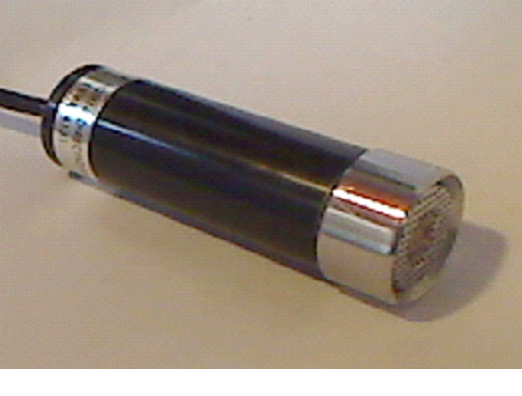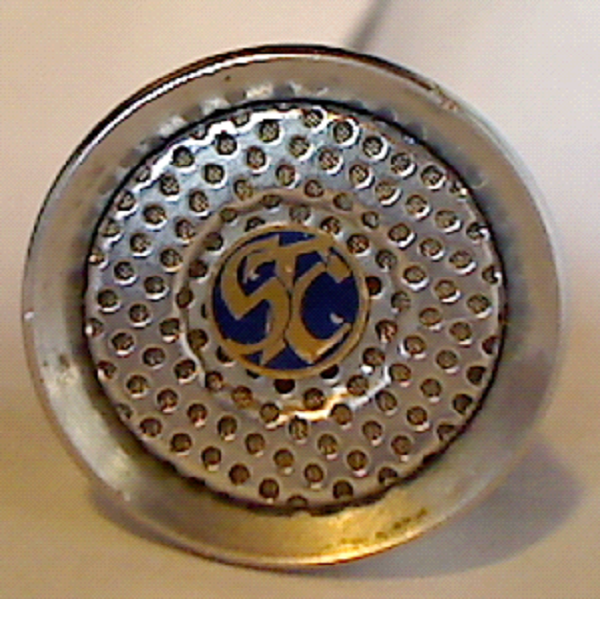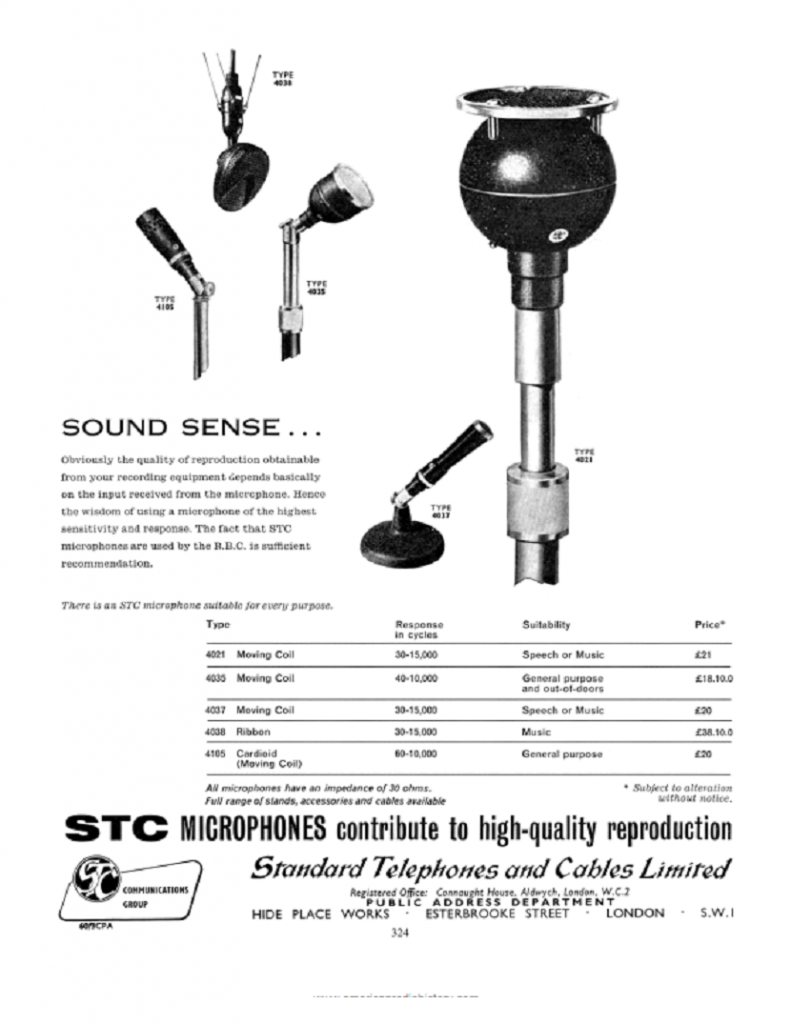Keith Wicks
I purchased this microphone at a car boot sale as I was attracted by the STC brand.
Size is about 83 mm x 25 mm (3¼ in x 1 in).
(Click on the pictures below to see larger versions:
use your Browser’s BACK button to return to this page)
John Howell
I am aware of some of ST&C’s less common offerings e.g., 4105,4106,4136,4118, 4113 but have no information on the 4131. The firm did advertise their cheaper mics as ‘to professional standards’ presumably to avoid calling them ‘domestic’ or ‘amateur’. They were generally very good microphones.
Nick Ware
Personally, and I could be wrong, but I don’t think that cheapie-looking mic is entitled to wear the STC badge.
Keith Wicks
I think the well-made STC badge on the front was applied because it was available off the shelf, but the label at the base with the mic details is a cheaply-made stick-on type. Quite a contrast, and I think that means the mic was relatively cheap and intended for amateur use. I’m not equipped to do an accurate evaluation of microphone quality, but a simple speech test seemed to indicate that the 4131 is of good quality. The HF response seemed particularly good.
I’ve attached a 1960s STC advert for various microphones. Note that all those shown are 30Ω types, whereas the 4131 has a 150Ω impedance.
(Click on the picture below to see larger version:
use your Browser’s BACK button to return to this page)
Geoff Fletcher
That makes 4021, 4033, 4035, 4036, 4037, 4037a, 4038, 4105, 4106, 4113 and 4118.
What about the numbers in between? What do the first two numbers indicate in each series?
Are there mics whose numbers start with say a 39 prefix or a 42 prefix for example? Are there lots of unfamiliar ST&C mics out there like this mysterious 4131 or were the ones numbered in between failures in some way? The numbers thing is actually quite interesting – it is probably all laid bare in the official history of the ST&C company – which must exist somewhere.
John Howell
have on loan a history of ST&C and there is no mention of type numbers that I can find. What is impressive is the range of products they made; from Strowger telephone exchanges to submarine telegraph & telephone cables.
Stokes in "70 years of Radio Valves & Tubes" states that STC marketed Weston Electric tubes with a 4 added to indicate that they were from section 4000 of the British Catalogue, thus WE 215A became STC 4215A. All this becomes really muddled because we find that a 4033A is a transmitting valve as well as our boom mic of the same number.
I had a similar feeling (“… a cheapie-looking mic…”) about my STC 4113. It would look more at home relaying the words "Hello Campers" than anything more serious and is in fact a rather good cardioid ribbon.
David Denness, Peter Neill
Would Coles Engineering who took over STC microphone manufacturing and service be able to help? Coles is not a surname, but two ex-STC engineers named Colin and Les.
Keith Wicks
I have asked Coles (Coles Electroacoustics) for information from their archives about STC microphones.






